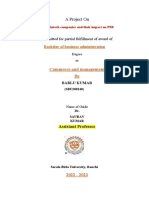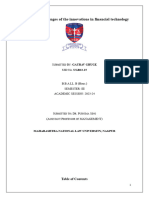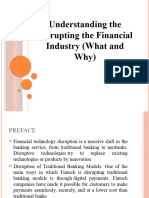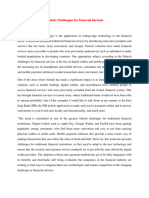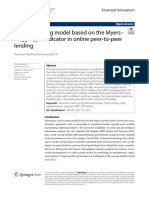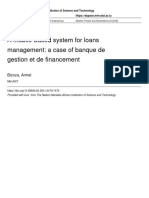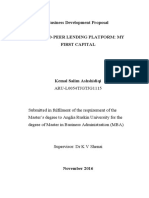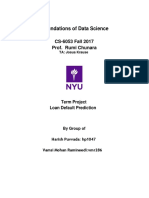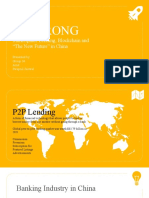0% found this document useful (0 votes)
25 views12 pagesMinor Project
This project examines the transformative impact of Financial Technology (Fintech) on traditional banking, focusing on financial inclusion and digital transformation. It highlights how Fintech innovations, such as mobile banking and blockchain, have expanded access to financial services while challenging established banking models. The study utilizes secondary research to analyze the implications of Fintech for both developed and developing economies, emphasizing the need for traditional banks to adapt to the digital landscape.
Uploaded by
ktajkumarrao11Copyright
© © All Rights Reserved
We take content rights seriously. If you suspect this is your content, claim it here.
Available Formats
Download as PDF, TXT or read online on Scribd
0% found this document useful (0 votes)
25 views12 pagesMinor Project
This project examines the transformative impact of Financial Technology (Fintech) on traditional banking, focusing on financial inclusion and digital transformation. It highlights how Fintech innovations, such as mobile banking and blockchain, have expanded access to financial services while challenging established banking models. The study utilizes secondary research to analyze the implications of Fintech for both developed and developing economies, emphasizing the need for traditional banks to adapt to the digital landscape.
Uploaded by
ktajkumarrao11Copyright
© © All Rights Reserved
We take content rights seriously. If you suspect this is your content, claim it here.
Available Formats
Download as PDF, TXT or read online on Scribd
/ 12






























